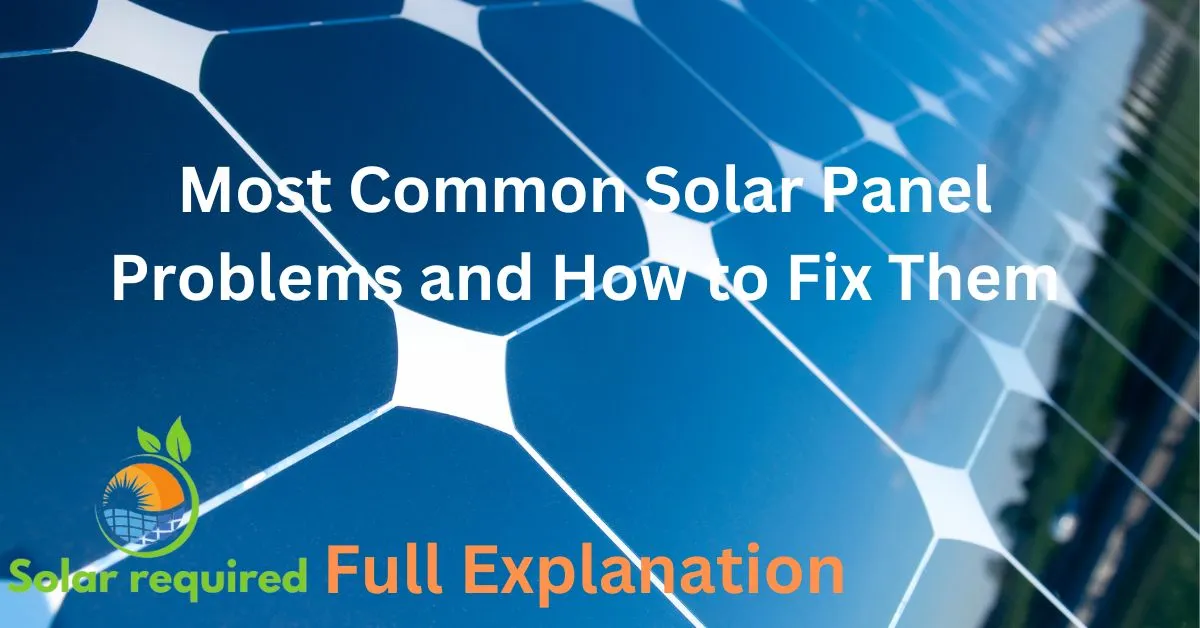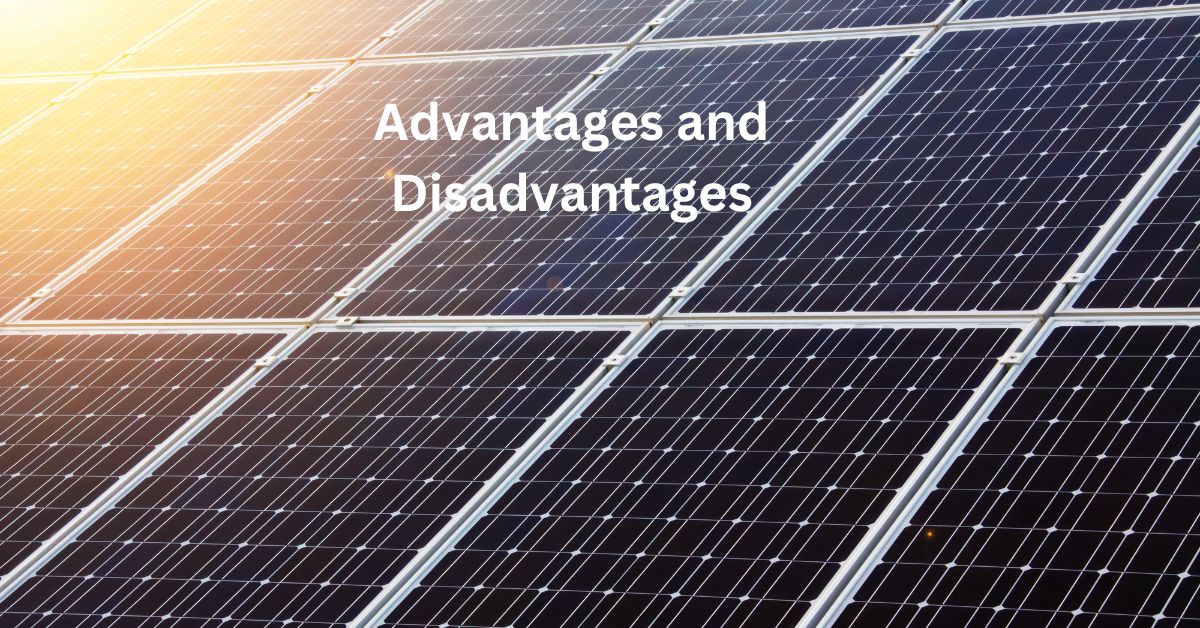Solar panels have soared in popularity as a reliable and renewable energy source. However, like any technology, they can encounter issues. Understanding these problems and how to fix them can save time and money and ensure your system operates efficiently. Here’s a guide for homeowners, solar panel installers, and maintenance technicians. It covers the top 10 solar panel problems and their solutions.
1. Inverter Problems
The inverter converts solar energy into electricity you can use in your home. If your system is underperforming, the inverter is often the first place to check. Inverter problems are common in solar panels as they convert current from solar panels to other currents. Solar panels have a 23 to 25-year lifespan while an inverter can only be effective for seven to eight years. Frequently needs changing
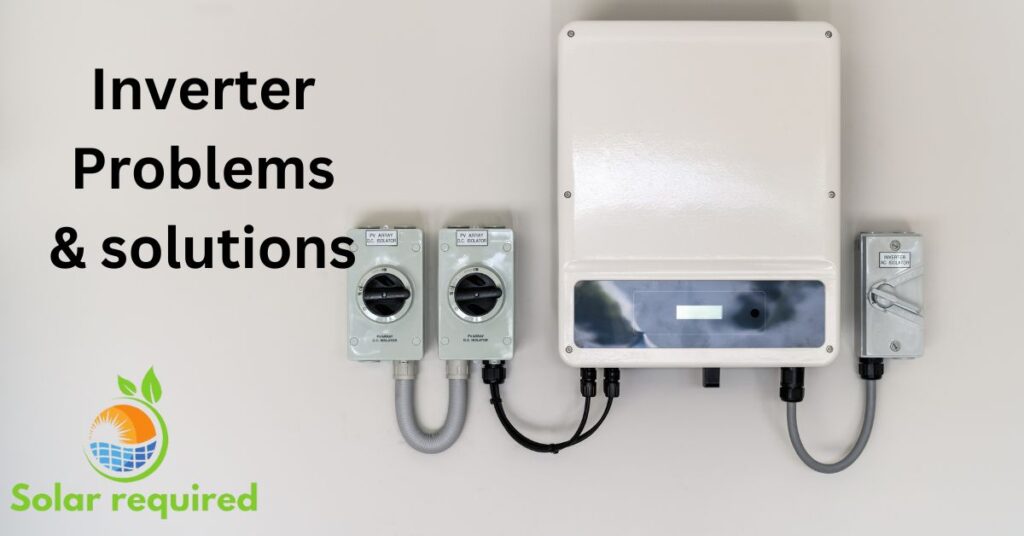
Easy Solution:
Regularly inspect your inverter for error messages and clean it to prevent overheating. If errors persist, consult a technician for a detailed diagnosis or replacement.
2. Cell breakages
Solar cells are the main parts of the solar panel i.e. from which the current is generated. Above the solar cells, there is a glass cover. If the glass cover is useless, the solar cells can also be damaged, so the class cover must be strong. Can avoid damage.
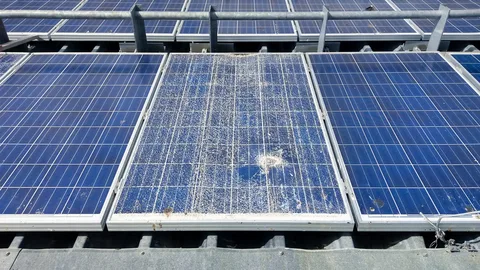
Easy Solution:
You should strengthen the glass cover of your solar panel to protect the cell of the solar panel
3. Regularly Check the Wiring
Faulty or aging wiring can cause reduced performance or pose a safety risk. Think of solar panels like a team, where each player needs to do their job. If someone messes up the connections or wiring, some players are not passing the ball right. That can mess up how much electricity the panels make. So, it’s important to check the panel performance and fix any problems with the connections or the equipment that helps turn the electricity into what your home uses.

Easy Solution:
Inspect your wiring connections each year. Look for signs of damage, corrosion, or loose connections. Fix or replace them as needed.
4. Soil Particles on Top of Solar Panels
Dust, dirt, and debris can accumulate on your panels, significantly reducing efficiency. Imagine your solar panels are like windows soaking up sunlight to make electricity. If they get dirty with things like dust, leaves, or bird poop, it’s like having dirty windows blocking the sunlight. Cleaning them regularly helps keep them working well.
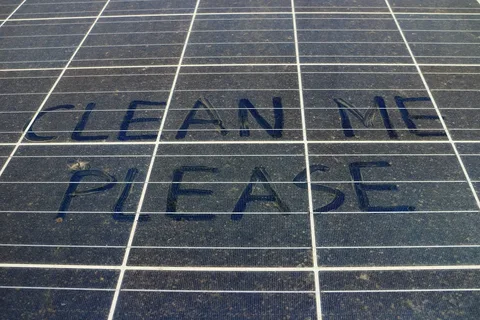
Solution:
Clean your solar panels regularly using a soft cloth, sponge, and water to remove soil particles. For safety and to avoid damage, do not use harsh chemicals or abrasive tools.
5. Windbreaking of solar panels on rooftops
Sometimes, people put solar panels on their roofs. They should not do this because strong wind or rain can damage the panels. The panels should be secured on the top or bottom of the roofs.
Solution:
To secure the solar panels to the roof, you can tie the solar panels securely with a rope or you can lock them in a frame.
6. Shading Issues
Shade from trees, buildings, or other structures can impact the amount of sunlight your panels receive. The panel won’t make as much electricity. So, it’s best to put panels where they’ll get the most sun without any shadows.

Solution:
Periodically check for new shading issues and trim any overhanging branches. Consider repositioning your panels if shading is a constant problem.
7. Panel Degradation
Over time, solar panels naturally degrade and produce less electricity. This degradation rate can increase due to harsh weather conditions.
Easy Solution:
While degradation is inevitable, buying high-quality panels with a low degradation rate can reduce its impact. Also, ensure your warranty covers long-term performance to safeguard your investment.
8. Solar Panel Current Problems
Some solar panels are fake in the market. Fake solar panels have very low current. If you buy an upgraded solar panel and its current is low, you should return it because new solar panels have a good current. Changes in the electrical current can show a problem. It might be with your system’s ability to convert solar power well.
Solution:
Install a monitoring system to regularly check the current. If abnormalities are detected, reviewing your system’s wiring and connections is a good first step. Consult a professional for more complex issues.
9. Cracked Panels or Broken Glass
Broken glass or cracked solar panels should be repaired quickly to avoid problems later. Physical damage to your panels can occur due to weather events, animals, or falling debris.
Solution:
Inspect your panels for any cracks or breakages regularly. Small cracks can be sealed to prevent moisture entry, but panels with significant damage should be replaced.
10. Water Damage
While buying a solar panel, you should pay attention to whether the solar panel is waterproof or not, because the solar panels are always outside, there may be problems in bad weather, so make sure that the solar panel is waterproof. It is waterproof. Though solar panels are designed to be waterproof, seals can deteriorate over time, allowing water to enter.
Solution:
Check the integrity of your panel’s seals and junction boxes periodically. If you notice any moisture or fogging, have a professional reseal or replace the affected components.
11. Poor Installation
Improper installation can lead to multiple issues down the line, from decreased efficiency to potential roof damage. After buying a solar panel, installing it. The process of solar panel installation is not so easy. Most people face the problem that the solar panel installer they call does not install the solar panel properly. They make these mistakes while installing solar panels.

Solution:
Ensure your installation is done by certified professionals. If you suspect poor installation, have an experienced technician review your system. They will correct any issues they find.
12. Micro-cracks
Micro-cracks can form due to physical stress during installation or environmental factors. While they may not be visible to the naked eye, they can affect the panel’s performance. They can happen because of things like changes in temperature or small bumps. Even though they’re small, they can make the panels less good at turning sunlight into electricity. Regular checks can catch these cracks before they become a big problem.
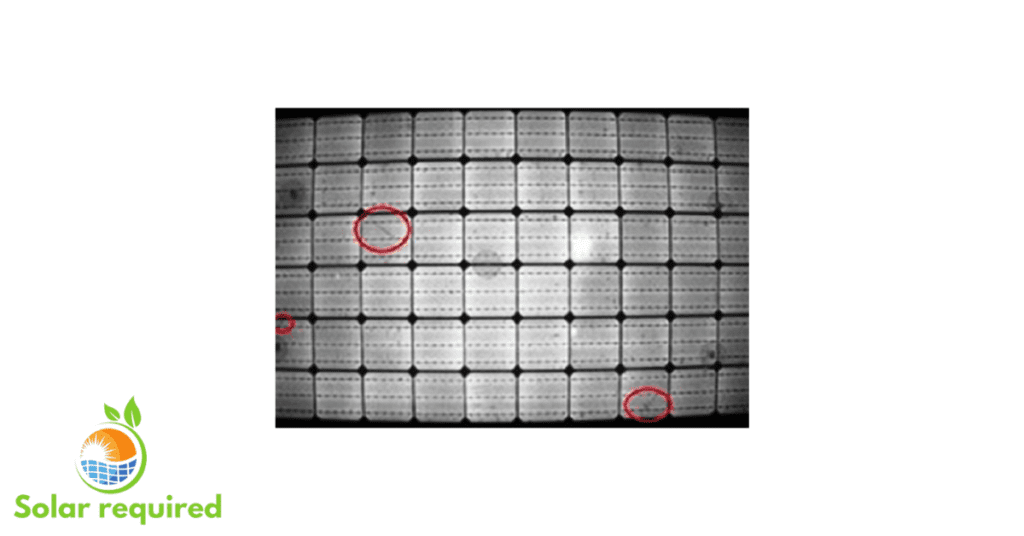
Solution:
Use a thermal camera or seek professional assessment to detect micro-cracks. Depending on the severity, consider replacing the affected panels.
Maintaining your solar panels and fixing issues promptly ensures they keep providing clean, efficient energy for years. Always consult with a professional when dealing with complex problems or when in doubt about the appropriate course of action.
13. Water is leaking inside the solar panel
Here are Some factors that can cause a solar panel’s internal water leakage.
- Broken seals
- Glass or frame cracks
- Incorrect installation
Water can weaken the panel’s insulation. It can also damage its electrical connections and cause short circuits. Also, moisture in the panel may fog the glass. This lowers the sunlight reaching the cells, reducing the panel’s effectiveness.
3 Steps for Easy Solution:
1. Identify and repair the source of leakage, such as damaged seals or cracks in the panel’s frame.
2. Use proper mounting hardware. Also, ensure a watertight seal between the panel and the mounting surface.
3. Do regular maintenance to check for water damage. This includes inspecting seals, cleaning the panel, and watching for efficiency.
Final words
These are 13 problems common in solar panels I have told you these problems and their solutions in this article I hope you have read this entire article and gained a lot of information from it that is my only aim. That I can convey clear information to you
